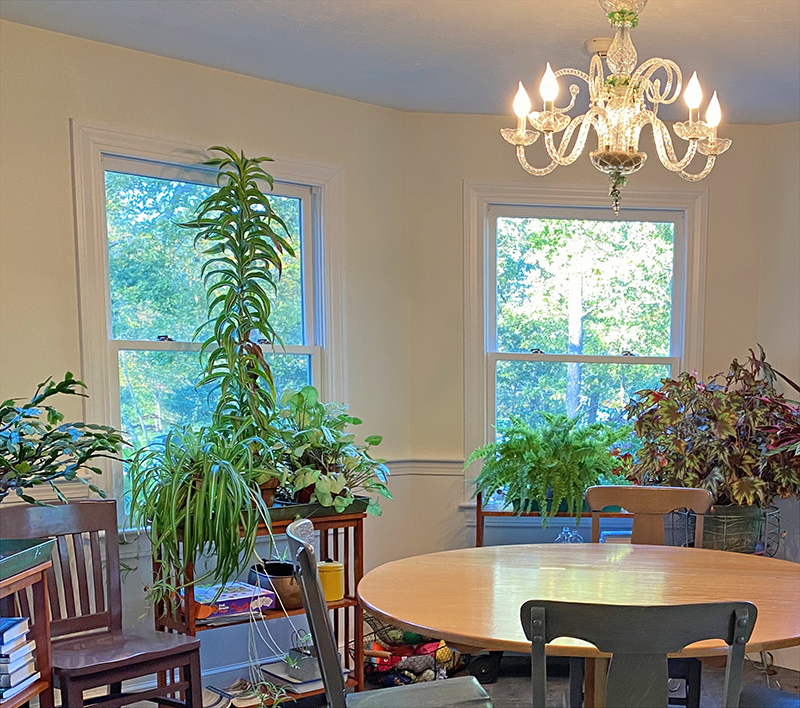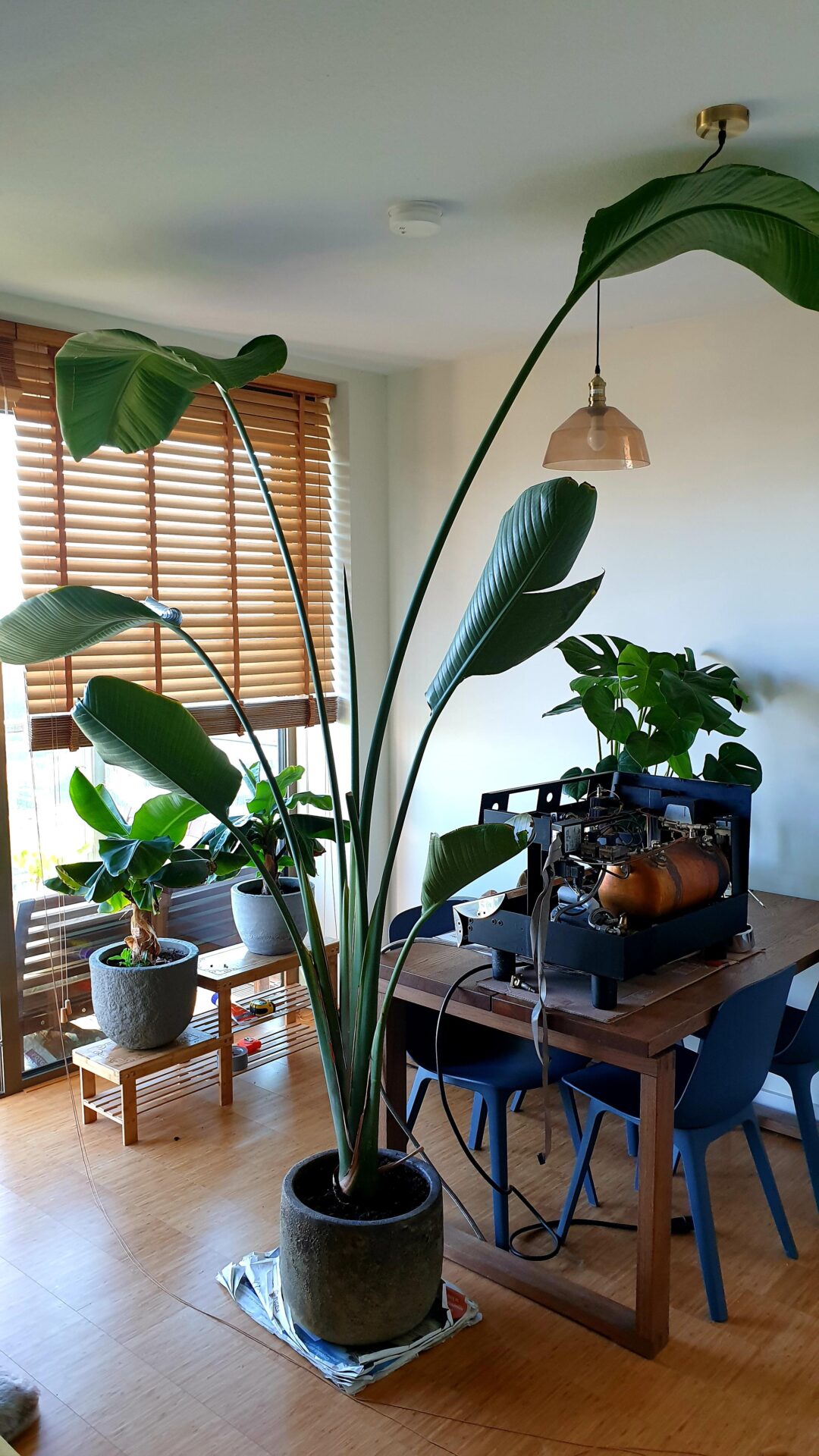Trim the plant and repot it in a larger container. This helps manage growth and ensures healthier roots.
House plants can sometimes outgrow their pots, leading to overcrowded roots and stunted growth. Managing oversized plants is essential for their health and appearance. Regular trimming and repotting are effective solutions. Pruning helps maintain the plant’s shape and size while encouraging new growth.
Repotting provides more space for roots to expand, preventing them from becoming root-bound. When you notice your plant becoming too large, it’s a sign to act. Choose a pot that is slightly larger than the current one and use fresh soil. Proper care ensures your plants remain vibrant and healthy, enhancing your living space.

Credit: www.lovethatleaf.co.nz
Identifying Overgrown House Plants
House plants can grow quickly under the right conditions. Identifying when they get too big is crucial. Overgrown plants can cause several issues. They might need more space, light, or nutrients. Recognizing the signs early can help keep your plants healthy and thriving.
Signs Your Plant Needs Attention
- Roots are visible: Roots may grow out of the pot’s drainage holes.
- Leaves are yellowing: Yellow leaves might indicate nutrient deficiency or stress.
- Plant is top-heavy: The plant may tip over easily due to an unbalanced structure.
- Stunted growth: New leaves or stems may grow smaller than usual.
- Soil dries out quickly: The plant may need water more frequently.
Common Causes Of Overgrowth
| Cause | Description |
|---|---|
| Over-fertilization | Too much fertilizer can cause rapid growth. |
| Inadequate pot size | The plant may outgrow its pot quickly. |
| Optimal light conditions | Good light can stimulate faster growth. |
| Proper watering | Consistent watering can promote healthy growth. |
Understanding these causes can help manage plant growth effectively. Regular observation and maintenance are key to healthy house plants.
Pruning Techniques
Pruning is essential for managing the size of house plants. It helps maintain their health and appearance. Proper pruning techniques can promote new growth and prevent diseases.
Choosing The Right Tools
Using the right tools makes pruning easier and more effective. Here are some tools you might need:
- Pruning Shears: Ideal for small branches and stems.
- Bypass Loppers: Useful for thicker branches.
- Pruning Saw: Best for large, woody stems.
- Disinfectant: Clean tools to prevent disease spread.
Step-by-step Pruning Guide
- Identify the Areas to Prune: Look for dead, diseased, or overgrown branches.
- Disinfect Your Tools: Clean your tools before starting. This prevents infections.
- Cut at an Angle: Make cuts at a 45-degree angle. This encourages new growth.
- Trim Overgrown Branches: Cut back to a healthy bud or branch.
- Remove Dead or Diseased Parts: Dispose of these properly. They can harm the plant.
- Shape the Plant: Trim to maintain the desired shape and size.
- Clean Up: Remove all cuttings and debris from the area.
Follow these steps to keep your house plants healthy and manageable. Pruning regularly can extend the life of your plants and enhance their beauty.
Repotting Essentials
House plants bring life to your home, but they can outgrow their pots. Repotting is essential for their health and growth. This guide will help you through the process.
Selecting The Right Pot
Choosing the right pot is crucial. It impacts the plant’s growth and health.
- Size: Select a pot 1-2 inches wider than the current pot.
- Drainage: Ensure the pot has drainage holes to prevent root rot.
- Material: Choose between plastic, ceramic, or terracotta based on your needs.
Best Soil Mixes For House Plants
The right soil mix ensures proper nutrition and drainage.
- Cactus and Succulents: Use a mix of sand, perlite, and potting soil.
- Ferns: Use a mix rich in organic matter like peat moss and perlite.
- Orchids: Use a special orchid mix that includes bark and charcoal.
| Plant Type | Recommended Soil Mix |
|---|---|
| Succulents | Sand, perlite, potting soil |
| Ferns | Peat moss, perlite, compost |
| Orchids | Bark, charcoal, perlite |
Follow these tips to keep your house plants healthy and thriving. Happy planting!
Propagation Methods
Houseplants bring life and color to any home. But sometimes, they grow too big for their space. Knowing how to propagate them can help keep your plants healthy and beautiful. Here are some effective propagation methods to manage your oversized houseplants.
Stem Cuttings
Stem cuttings are a popular way to propagate houseplants. Follow these simple steps:
- Choose a healthy stem with at least two leaves.
- Cut the stem just below a node using a sharp knife.
- Remove the lower leaves from the cutting.
- Place the cutting in a jar of water or moist soil.
- Wait for roots to develop, which usually takes a few weeks.
- Once roots appear, transfer the cutting to a pot with soil.
Stem cuttings work well for many plants, including pothos, philodendrons, and succulents.
Leaf Cuttings
Leaf cuttings are another great way to propagate plants. Here’s how to do it:
- Choose a healthy leaf from the plant.
- Cut the leaf close to the base using sharp scissors.
- Allow the cut end to dry for a day to form a callus.
- Place the leaf in a pot with moist soil, cut side down.
- Keep the soil moist but not waterlogged.
- Wait for new roots and shoots to develop, which can take several weeks.
Leaf cuttings are ideal for plants like snake plants and begonias.
Both propagation methods can help you manage your houseplants and even create new ones to share with friends and family.
Training And Shaping
House plants can sometimes outgrow their space. Training and shaping them can help manage their size. This ensures they stay healthy and look beautiful.
Using Supports And Ties
Supports and ties can help guide the plant’s growth. Use stakes, trellises, or wires to provide support. Tie the plant to these supports using soft ties. Avoid tying too tightly, which can damage the plant.
Here is a simple guide:
- Choose a support that matches the plant’s size.
- Insert the support into the soil near the plant’s base.
- Gently tie the plant to the support.
- Check regularly to adjust ties as the plant grows.
Shaping With Pruning
Pruning helps maintain the shape and size of house plants. Use clean, sharp scissors or pruning shears. Remove dead or overgrown branches first.
Steps for effective pruning:
- Identify branches that need cutting.
- Cut just above a leaf node or bud.
- Remove no more than one-third of the plant at a time.
- Dispose of cuttings to avoid pests.
Pruning encourages new growth and keeps the plant tidy. Regular pruning can also prevent diseases.

Credit: www.reddit.com
Nutrient Management
When house plants get too big, they require more nutrients. Proper nutrient management ensures that your plants stay healthy and vibrant. Learn how to fertilize and adjust watering schedules to keep your overgrown plants thriving.
Fertilizing Overgrown Plants
Overgrown plants need more nutrients than smaller ones. Fertilizing becomes crucial to support their growth. Use a balanced fertilizer to provide essential nutrients. Follow these steps:
- Choose a liquid or granular fertilizer.
- Read the label for application instructions.
- Apply the fertilizer every 2-4 weeks.
- Water the plant after fertilizing to help absorption.
Organic fertilizers are also a great option. They improve soil health and provide slow-release nutrients. Consider using compost or worm castings as natural alternatives.
Adjusting Watering Schedules
Overgrown plants may need more water. Adjusting the watering schedule is essential. Here are some tips:
- Check soil moisture regularly.
- Water deeply but less frequently.
- Ensure proper drainage to avoid root rot.
- Mist leaves if the air is dry.
Consistent watering helps maintain plant health. Avoid over-watering as it can cause more harm. Use a moisture meter to check the soil’s moisture level.
| Watering Schedule | Frequency | Notes |
|---|---|---|
| Summer | 2-3 times a week | More water needed due to heat. |
| Winter | 1-2 times a week | Less water needed due to cool weather. |
Dealing With Root Bound Plants
When house plants grow too big, their roots can get tangled and crowded. This is called being root bound. Dealing with root bound plants is essential to keep them healthy and thriving.
Loosening The Roots
First, remove the plant from its pot. You might need to gently tap the sides or use a tool to help it out. Once out, look at the roots. If they are tightly wrapped, you need to loosen them.
- Gently massage the roots with your fingers.
- Use a clean, sharp knife to cut away any dead or rotting roots.
- Trim the longest roots to help the plant grow better.
Loosening the roots helps the plant absorb water and nutrients more efficiently.
Transplanting Techniques
After loosening the roots, it’s time to transplant the plant into a new pot. Follow these steps to ensure a smooth transition:
- Choose a pot that is 1-2 inches larger in diameter than the old one.
- Fill the bottom of the new pot with fresh potting soil.
- Place the plant in the center of the new pot.
- Fill the rest of the pot with soil, covering the roots completely.
- Press the soil down gently to remove any air pockets.
- Water the plant thoroughly.
Make sure the pot has drainage holes to prevent water from pooling at the bottom.
Follow these steps to keep your house plants healthy and happy. Proper care ensures they continue to grow beautifully.
Preventing Future Overgrowth
House plants can grow quickly and surprise you with their size. You need to take steps to stop them from taking over your space. Follow these tips to keep your plants in check.
Regular Maintenance Tips
Keeping your plants the right size means regular care. Here are some tips to help:
- Prune regularly: Cut off dead leaves and branches.
- Check root growth: Repot if roots fill the pot.
- Water correctly: Overwatering can make plants grow too fast.
- Fertilize less: Too much fertilizer can cause rapid growth.
Choosing The Right Plants For Your Space
Selecting the right plants is key to preventing overgrowth. Here are some things to consider:
| Plant Type | Ideal Space |
|---|---|
| Succulents | Small pots, shelves |
| Ferns | Medium pots, tabletops |
| Spider Plants | Hanging baskets, corners |
Pick plants that fit your space to avoid overgrowth. Small spaces need small plants. Larger areas can handle bigger plants.

Credit: www.hyanniscountrygarden.com
Frequently Asked Questions
What To Do When Indoor Plants Grow Too Big?
Trim the plant regularly to control its size. Repot it into a larger container if needed. Ensure proper light and nutrients.
What To Do With An Overgrown Houseplant?
Trim back the plant using clean scissors. Repot it in a larger container with fresh soil. Ensure proper light and watering.
What Can I Do With Large Houseplants?
You can place large houseplants in bright spots, prune them regularly, and use them as natural room dividers.
What If I Don’t Want My Plant To Get Bigger?
Prune the plant regularly to control its size. Use smaller pots to limit root growth. Choose dwarf varieties.
Conclusion
Managing overgrown house plants can be simple. Regular pruning and repotting help control their size. Proper care ensures a healthy, thriving plant. Don’t forget to check for pests and diseases. Your plants will thank you with lush, vibrant growth. Enjoy your beautifully maintained indoor garden!

My mission is to help you bring the beauty of nature indoors with expert advice, detailed plant care guides, and creative design ideas.





Leave a Reply